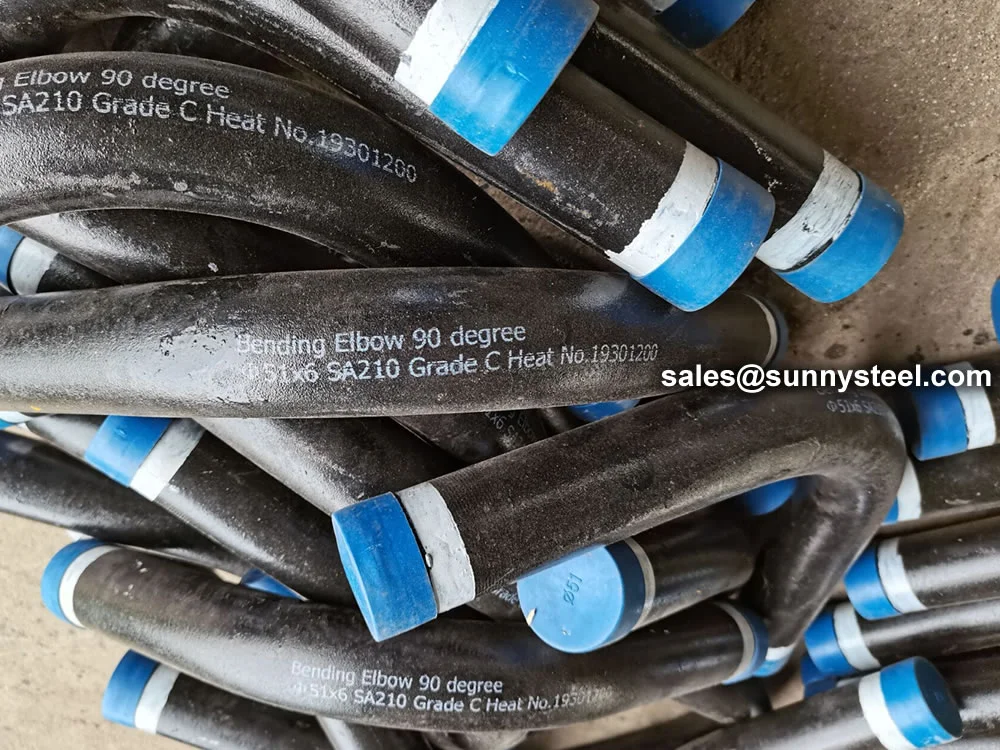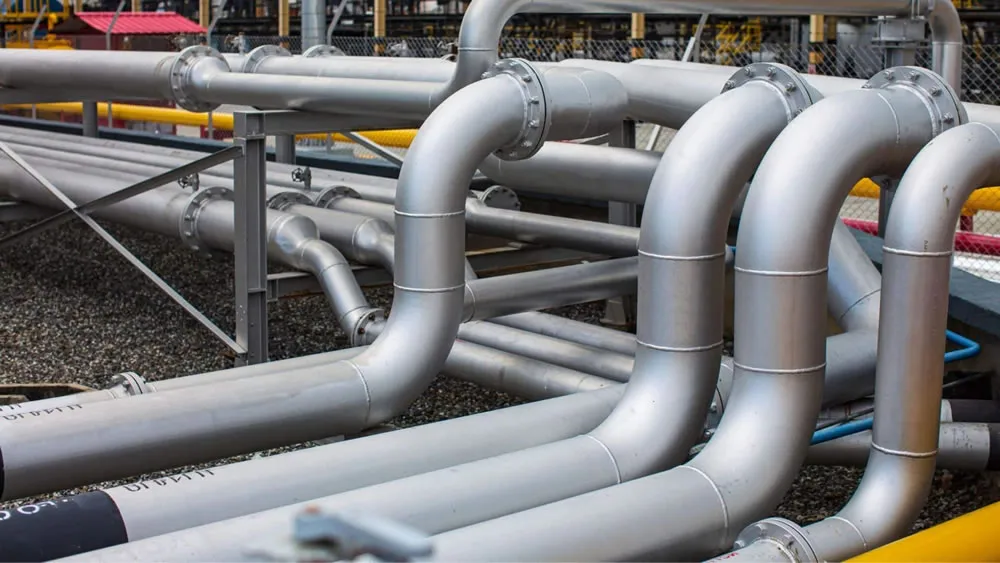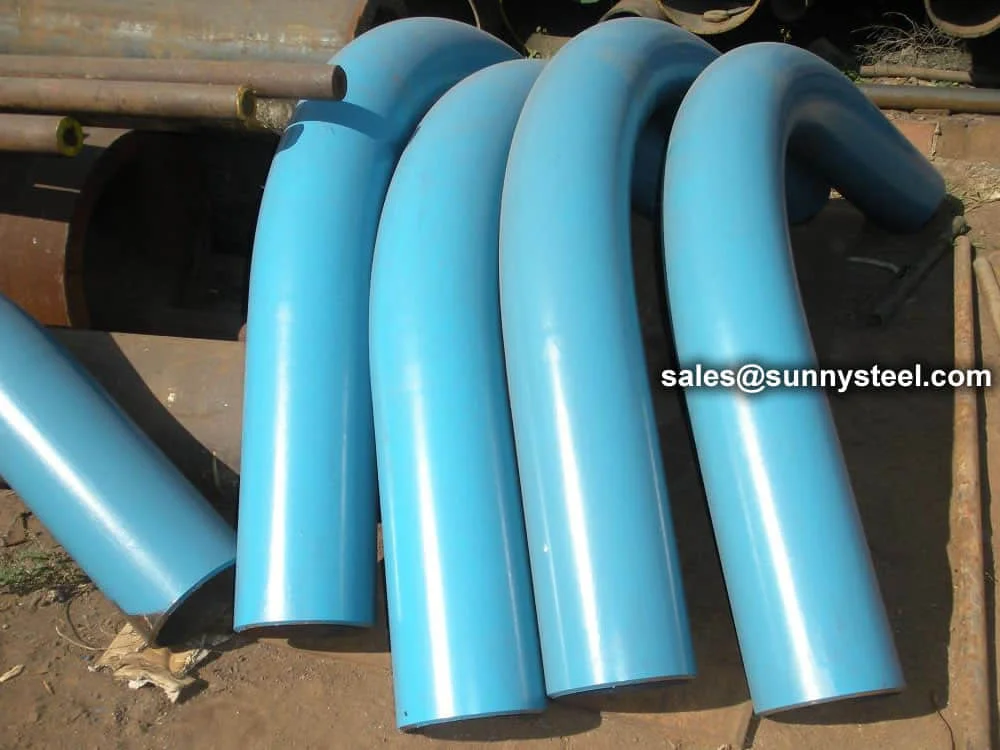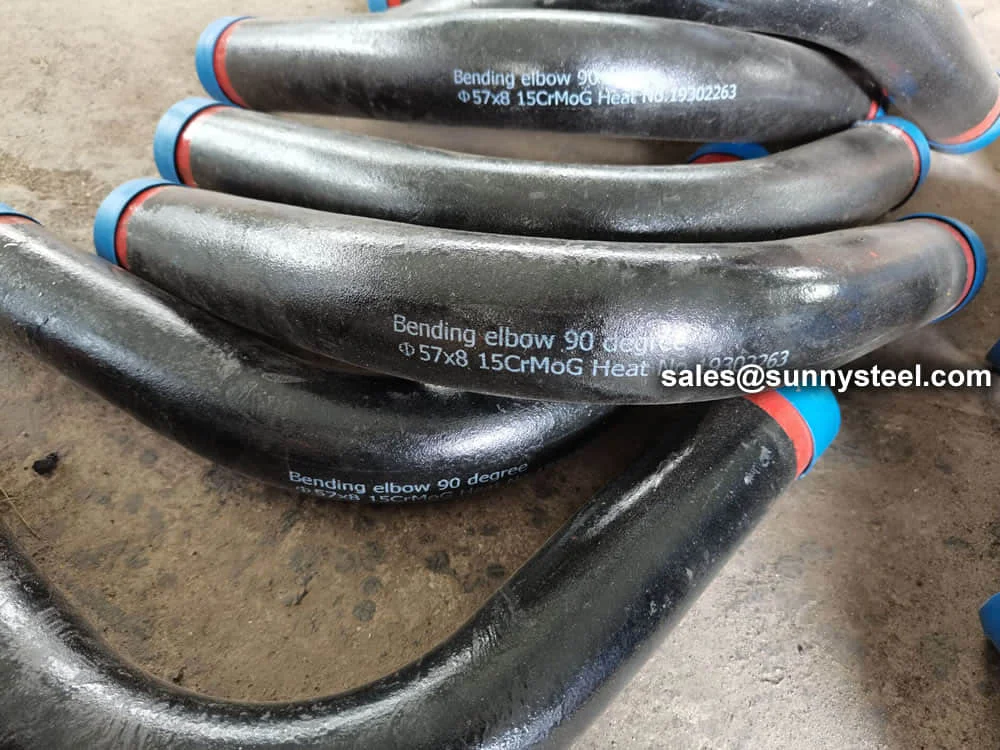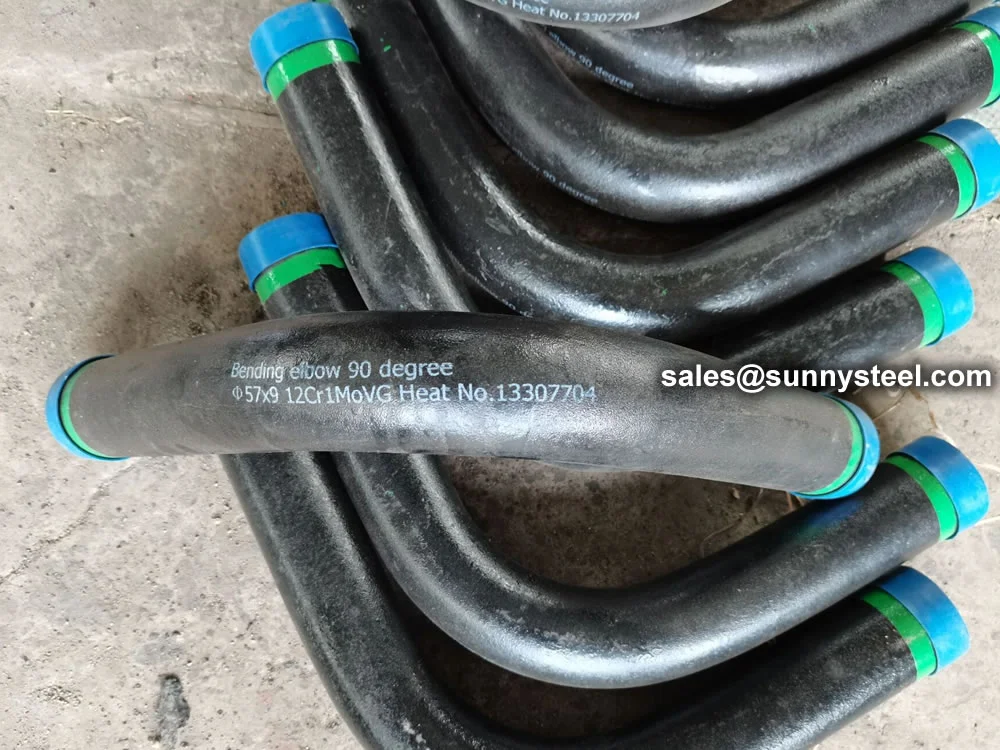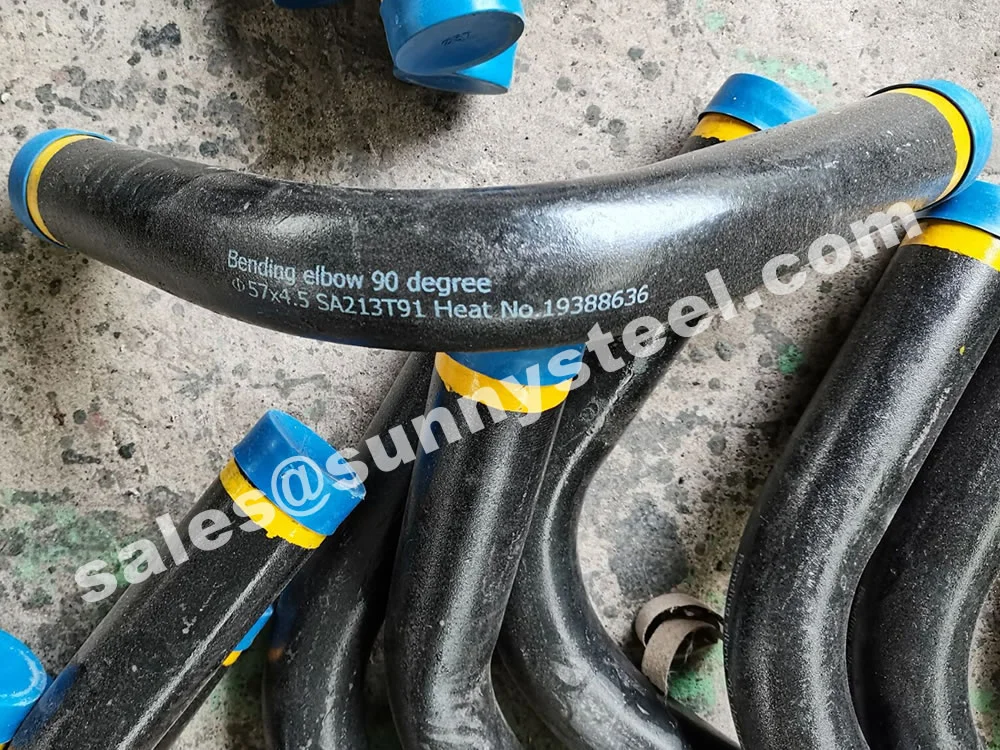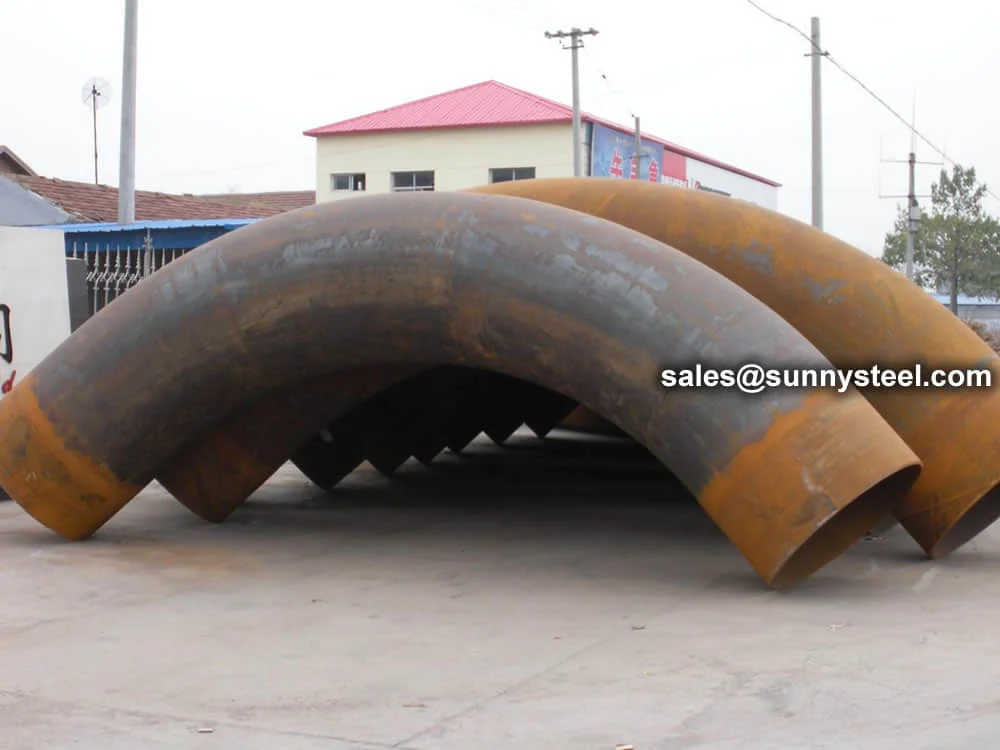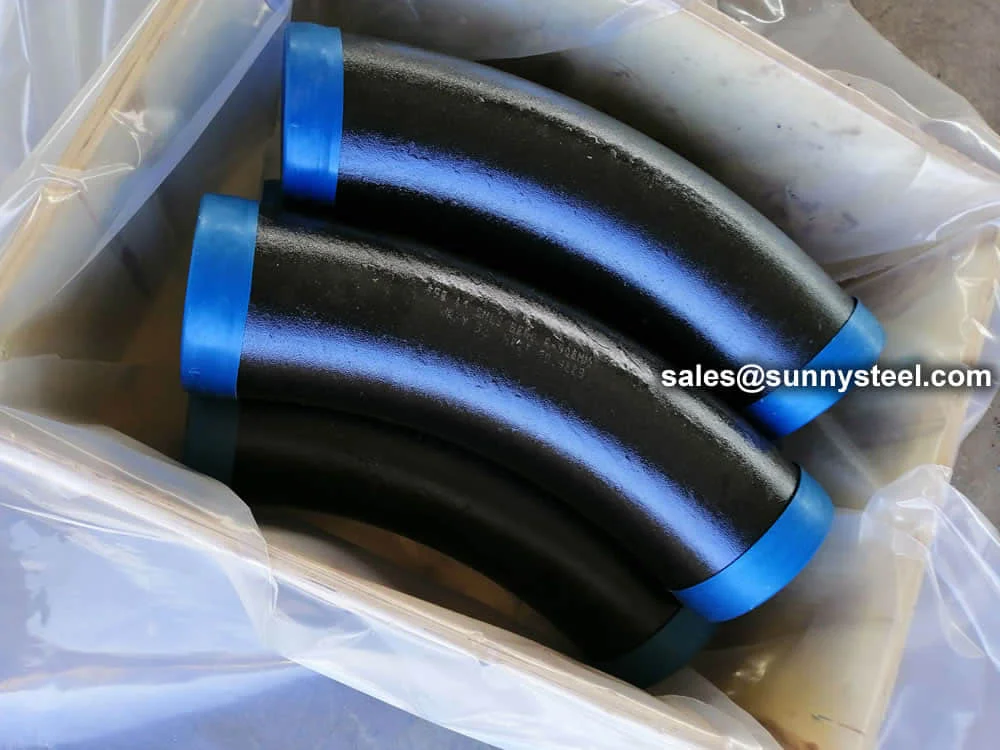ASTM A210 Grade C Pipe Bending involves forming seamless medium-carbon steel tubes into bends (e.g., 3D, 5D, 7D, or 180° U-bends) for high-pressure boiler applications. ASTM A210 Grade C, a seamless carbon steel, contains approximately 0.35% carbon and up to 0.29% manganese, offering good strength and weldability for temperatures up to 425°C. Compliant with ASTM A210/ASME SA210 standards, these bends are ideal for boiler pipeline protection in power generation, industrial heating, and chemical processing industries.
Manufactured through hot induction bending or cold drawing with optional heat treatment, A210 Grade C pipe bends are available in sizes from 1/2" (12.7mm) to 5" (127mm) outer diameter, with wall thicknesses from 0.9mm to 12.7mm, and bend radii of 3D, 5D, 7D, or custom. They exhibit tensile strength (≥485 MPa), yield strength (≥275 MPa), elongation (≥30%), and hardness (≤179 HB), ensuring reliability in high-pressure environments.
A210 Grade C pipe bends offer good weldability with standard techniques, though heavy wall thicknesses (≥10mm) may require preheating to avoid cracking. Rigorous testing, including chemical analysis, tensile testing, flattening tests (no cracks at specified heights), and nondestructive methods (radiographic, ultrasonic), ensures quality. Protective coatings like FBE or galvanization enhance corrosion resistance, making them suitable for harsh environments.
With a density of approximately 7.85 g/cm³ and thermal conductivity of ~50 W/(m·K) at 20°C, A210 Grade C pipe bends are cost-effective and robust, ideal for high-pressure boilers (pressure ≥9.8 MPa, temperature up to 425°C), superheaters, heat exchangers, and economizers. Their smooth interior surfaces reduce flow resistance, supporting boiler pipeline protection, refinery piping, cooling coils, and structural applications like handrails and frames.
For engineers seeking reliable high-pressure piping solutions, ASTM A210 Grade C pipe bends provide excellent strength, erosion resistance, and affordability, addressing challenges like pipeline corrosion in industrial settings.
You Can Also Search ASTM A210 Grade C Pipe Bends by
A curated list of long-tail keywords for ASTM A210 Grade C pipe bends, covering diverse bending applications, specifications, and material properties.
- • ASTM A210 Grade C pipe bend specifications
- • ASME SA210 Grade C seamless bend standards
- • Corrosion-resistant A210 Grade C bend tolerances
- • Custom A210 Grade C pipe bend dimensions
- • A210 Grade C hand rail bending
- • A210 Grade C sign frame bending
- • A210 Grade C trailer frame bending
- • A210 Grade C ornamental iron work bending
- • A210 Grade C exhaust pipe bending
- • A210 Grade C roll cage bending
- • A210 Grade C performance racing chassis bending
- • A210 Grade C custom exhaust bending
- • A210 Grade C boiler pipeline protection bending
- • A210 Grade C heat exchanger bending
- • A210 Grade C refinery pipe bending
- • A210 Grade C high-pressure boiler pipe bending
- • A210 Grade C carbon steel pipe bending
- • A210 Grade C seamless pipe bending
- • A210 Grade C mandrel pipe bending
- • A210 Grade C hot induction bending
- • A210 Grade C cooling coil bending
- • A210 Grade C industrial frame bending
- • A210 Grade C structural pipe bending
- • A210 Grade C oil field pipe bending
Note: ASTM A210 Grade C pipe bends are designed for high-pressure, corrosion-resistant piping in industrial boiler applications. Contact a certified supplier for detailed specifications.
